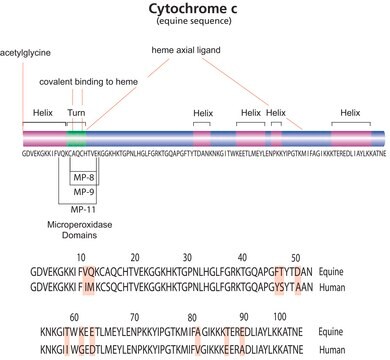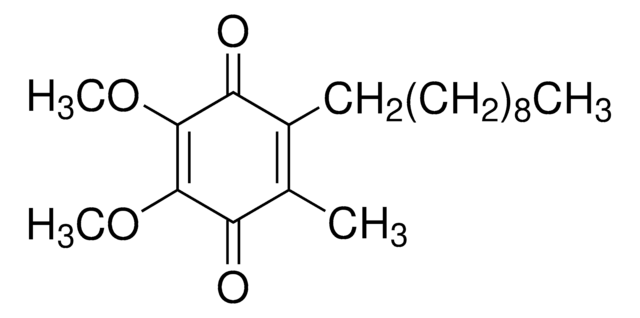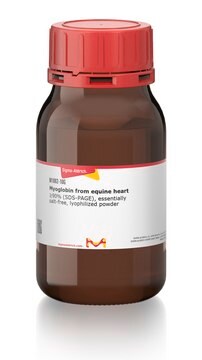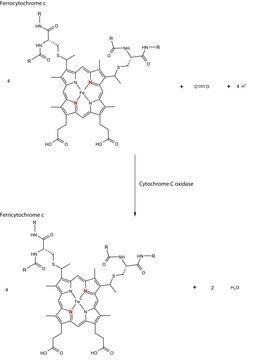C2867
Cytochrome c from equine heart
BioUltra, ≥99% (SDS-PAGE), powder, suitable for mammalian cell culture
Synonym(s):
CYC, CytC, Cytochrome c from horse heart
About This Item
Recommended Products
biological source
horse heart
Quality Level
product line
BioUltra
Assay
≥99% (SDS-PAGE)
form
powder
mol wt
12,384
storage condition
(Tightly closed Dry)
technique(s)
cell culture | mammalian: suitable
solubility
water: 10 mg/mL, dark red-brown
UniProt accession no.
storage temp.
−20°C
Gene Information
horse ... CYCS(100053958)
Looking for similar products? Visit Product Comparison Guide
Related Categories
General description
Research area: Apoptosis
Application
Biochem/physiol Actions
Preparation Note
Other Notes
Not finding the right product?
Try our Product Selector Tool.
Storage Class Code
11 - Combustible Solids
WGK
WGK 3
Flash Point(F)
Not applicable
Flash Point(C)
Not applicable
Personal Protective Equipment
Choose from one of the most recent versions:
Already Own This Product?
Find documentation for the products that you have recently purchased in the Document Library.
Customers Also Viewed
Articles
Learn about the four membrane-bound protein complexes that make up the electron transport chain metabolic pathway supplying energy as ATP for cellular respiration.
Chromatograms
application for HPLCapplication for HPLCapplication for HPLCOur team of scientists has experience in all areas of research including Life Science, Material Science, Chemical Synthesis, Chromatography, Analytical and many others.
Contact Technical Service







